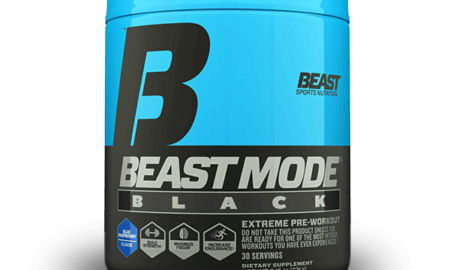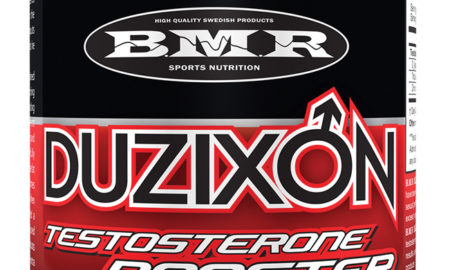If you check the medical literature for side effects of growth hormone use, you’ll note that diabetes often makes the list. A common effect of GH use is insulin resistance, which is considered a harbinger of full-blown diabetes. In fact, insulin resistance is often called “pre-diabetes.” Estimates are that as many as 50 million Americans fit the criteria for insulin resistance.
GH enters the picture because it triggers the release of large amounts of free fatty acids into the blood. The free fatty acids, in turn, interfere with the uptake of glucose, or blood sugar, into cells, and the body attempts to compensate by producing more insulin. Insulin aides glucose uptake into cells, but as the body continues to release large amounts of insulin, the cells become resistant to it. Hence the insulin resistance.
Bodybuilders and other athletes are aware of this GH side effect. They often counter it by adding insulin injections to their drug stacks, which serves two purposes: 1) It counters the hyperglycemia, or elevated blood glucose, brought on by GH-induced insulin resistance; 2) it has anticatabolic effects in muscle, and when used with GH and anabolic steroids, it appears to add a layer of anabolic efficiency. Insulin also favors amino acid uptake into muscle and triggers the enzyme that produces muscle glycogen, an effect that creates a fuller-appearing muscle.
Of course, using insulin is not without its dangers. Injecting it without taking in carbohydrate can lead to a disastrous drop in blood glucose. That, in turn, can cause a person to pass out suddenly or, depending on the dose used, lapse into a coma. The coma effect has actually happened to several well-known professional bodybuilders. Luckily, they all survived.
Then there are the aesthetic side effects of using insulin, particularly when combined with GH. Insulinlike growth factor 1 is a product of GH and, as the name implies, has a structure similar to insulin. At times IGF-1 may interact with the insulin cell receptor, although with far less affinity than insulin itself. There are many insulin cell receptors in the gut, however, and when insulin and/or IGF-1 interact with those receptors, organ growth results. It’s visible as a bloated abdomen and is particularly noticeable when viewed from the side. So you have the ironic appearance of a bodybuilder with low bodyfat, ripped abdominals and, when standing relaxed, a bloated gut.
While these various effects of insulin and GH are annoying, unless you overdo the insulin or use it incorrectly, your health isn’t at risk. The GH and diabetes connection is far more insidious and dangerous to long-term health. The notion that GH can bring on diabetes comes from observation of people afflicted with acromegaly, which is caused by a small tumor on the pituitary gland in the brain. The tumor causes huge amounts of GH to be secreted. If it happens prior to adulthood, giantism often results. These are people who stand well over 7’. They also often have serious health problems. Forty percent of people with acromegaly have diabetes related to the insulin resistance induced by excessive GH production. One notable example was pro wrestler André the Giant. His real name was André René Roussimoff, and he suffered from diabetes related to his acromegalic condition. He died of congestive heart failure at 46.
If large amounts of GH can cause diabetes, why don’t we hear about more bodybuilders being diagnosed with the disease? For one thing, most rational bodybuilders who use GH don’t stay on the drug year-round. As for older people who use GH as a form of aging therapy or to treat GH deficiency, their doses are a fraction of the amounts routinely used by athletes. Even so, a large percentage of older people using GH show insulin resistance at first. In most cases it subsides in a month or two.
A case report published in the British Journal of Sports Medicine in 2007 discussed a young bodybuilder who showed up at a local emergency room complaining of severe abdominal pain. His blood glucose level was 543.6 (normal is 100 or less). He told the attending physicians that he had used anabolic steroids for years and had recently added GH and insulin to his drug stack. He had stopped injecting the insulin after experiencing a few hypoglycemic episodes, but still he was diagnosed with diabetes. He received treatment for the diabetes, which, luckily for him, resolved after six weeks.
The most recent report linking diabetes to a bodybuilder on anabolic drugs involved a 33-year-old man who showed up at a local emergency room complaining of a variety of symptoms that included excessive thirst, excessive urination, nausea, headaches, blurry vision and just feeling like crap.1 A test of his blood glucose showed it to be 1082, which later rose to 1166. Again, normal is 100. He had started to feel sick four days prior to showing up at the ER. Further questioning revealed that he had been on a self-prescribed drug regimen for the past 3 1/2 months but had discontinued injections three weeks earlier. He denied use of any other drugs or alcohol, which was confirmed by a toxicology test. He had no family history of diabetes, a significant fact since diabetes usually has a genetic component.
Treatment began with intravenous fluids and a bolus of 10 units of regular insulin, plus an insulin drip. He was also given potassium, which helps speed glucose uptake into cells. Within six hours his blood glucose had returned to normal. He stabilized over the next 24 hours and was diagnosed with new onset diabetes. After two days he was discharged from the hospital.
The drug regimen that he had been on consisted of Sustanon 250, a blend of four testosterone esters that provide a time-released style of testosterone release; another type of testosterone that he wasn’t able to identify; and trenbolone acetate, or Finaplix, a veterinary anabolic steroid never approved for human use. It was described by the doctors as a “bovine growth hormone” because that’s precisely what it’s used for—to beef up cattle, in the form of pellets shot under the skin.
Trenbolone was formerly available in injectable form called Parabolan. Another form was called Finaject. It was a popular steroid among bodybuilders because it allegedly provided a hard appearance to the body, didn’t convert into estrogen and was very androgenic. The company that manufactured the injectable form of the drug, however, ceased production in 1987—although cattle implants continued to be sold. Two forms currently exist: Finaplix-H (for heifers) and Finaplix-S (for steers).The drug is not indicated for use in humans, but “kits” and instructions on how to crush the implants and use them as injections are available over the Internet. Problems include uncertainty about the purity of the dissolving substance, as well as concerns about possible contamination with toxins and bacteria, since the home brew drugs are not made under sterile conditions.
As for the bodybuilder, three months after showing up at the ER, he still had diabetes, but he was keeping it under control so that his blood glucose was at normal levels. He did that with a once daily dose of 35 units of long-acting insulin. He also stated that he would never again use any home brew cattle implant injections.
Hormones and Stretch Marks
Stretch marks, known medically as striae distensae, are commonly seen in those who lift weights. They can appear throughout the body, including on the abdomen, buttocks, lower back and thighs. In those who use anabolic steroids, stretch marks are often seen around the shoulders and upper arms. They initially appear as red or purple longitudinal marks along the skin, gradually fading to white.
Stretch marks are so common in steroid users that some doctors suggest that the combination of large muscles and excess stretch marks points to steroid use. On the other hand, anyone who is experiencing rapid muscle growth is going to get some stretch marks. Indeed, stretch marks are seen on the abdomens of 75 percent of pregnant women. With bodybuilders the immediate cause of stretch marks is often thought to be “the muscle growing too fast for the skin to adapt.”
From a medical standpoint, stretch marks occur when the dermis, or middle layer of the skin, is excessively stretched. They can develop under various disease conditions that affect the skin resiliency and also with any rapid gain or loss of weight. Using topical corticosteroid drugs interferes with the full development of skin proteins and could also cause stretch marks. When you add it all up, there are many possible ways to get them.
Some scientists suggest that hormonal causes are of paramount importance. The usual villain in this scenario is excess levels of cortisol, which interferes with the activity of the skin’s protein building blocks, leading to breaks in the dermis, visible as stretch marks.
A recent study also shows that other hormones are involved in the onset of stretch marks.2 For example, while normal levels of estrogen in the skin promote increased skin thickness and elasticity, too much has a reverse effect, interfering with wound repair and skin protein. Estrogens, however, tend to accelerate skin healing, while androgens, such as testosterone, blunt it. You don’t have to be a scientist to figure out that using high-dose steroid regimens predisposes you to acquiring stretch marks.
The new study examined recent stretch marks and found that they had a higher density of hormone receptors than normal skin, and estrogen appeared to be the most concentrated. Since estrogen is involved in skin healing, that could represent the body’s attempt to heal the injured skin tissue. From the standpoint of steroid users, the greater number of estrogen receptors in stretch marks could also represent a defense against the high level of androgens, which interfere with skin healing. That latter part, however, is strictly speculation. What is known is that stretch marks have a higher density of hormone receptors than normal skin.
Editor’s note: Jerry Brainum has been an exercise and nutrition researcher and journalist for more than 25 years. He’s worked with pro bodybuilders as well as many Olympic and professional athletes. To get his new e-book, Natural Anabolics—Nutrients, Compounds and Supplements That Can Accelerate Muscle Growth Without Drugs, visit www.JerryBrainum.com. IM
1 Geraci, M., et al. (2011). New onset diabetes associated with bovine growth hormone and testosterone abuse in a young bodybuilder. Hum Exp Toxicol. In press.
2 Cordeiro, R.C.T., et al. (2010). Expression of estrogen, androgen, and glucocorticocoid receptors in recent striae distensae. Int J Dermatol. 49:30-32.




















You must be logged in to post a comment Login